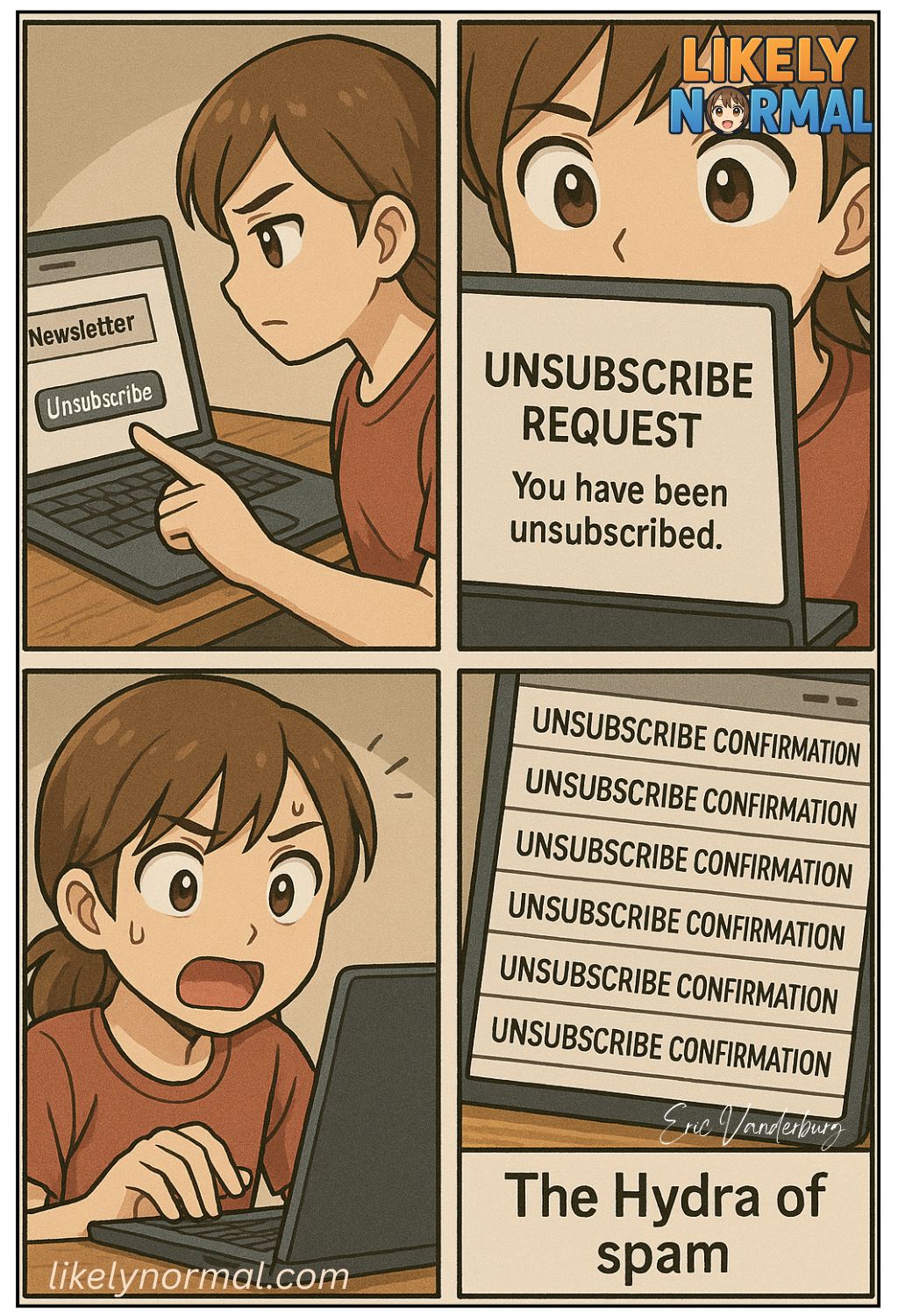Spam Hydra
There’s a special kind of modern frustration that comes with clicking that tiny, hopeful unsubscribe link at the bottom of a spam email. It’s like signing a petition that says “Please stop bothering me” and then immediately getting added to the mailing list for people who sign petitions. You’d have better luck negotiating with a vending machine that just ate your last dollar.
At first, it seems so promising. “One click and you’ll never hear from us again!” the email lies, with the sincerity of a used car salesman. You press the button, feeling a brief glow of accomplishment—until the next morning, when your inbox now contains twice as many emails from the same company, plus their weird cousin’s startup that somehow also got your address. Suddenly, you’re getting newsletters you didn’t even know existed, like Tupperware Weekly and Extreme Couponing for People Who Love Spreadsheets.
The real scam? That unsubscribe button is just a trap—a way for spam empires to confirm that yes, your email is definitely active and manned by a human who can be sold to more lists. It’s like telling a telemarketer “Take me off your list” and hearing them whisper “He’s alive… and vulnerable” into their headset before transferring you to their most annoying colleague.
And let’s talk about the process—some unsubscribe pages require you to log in (to an account you don’t remember making), others demand you check boxes of what you don’t want (implying you might still want some spam), and a few just reload the page with a cheerful “Oops! Try again later!” like a carnival game rigged against you.
The only surefire solution? Mark as spam, block, and pray. Or, if you’re feeling petty, respond with increasingly unhinged auto-replies like “I moved to the woods and no longer have Wi-Fi” or “This email address is now a honeypot for FBI cybercrime investigations.” Either way, the spam will outlive us all—a digital cockroach surviving the nuclear apocalypse to sell you discount Viagra in the ruins.

Discussion ¬